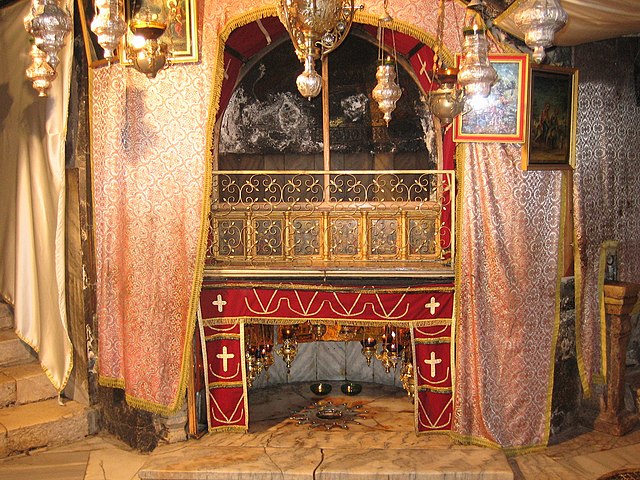The Christ Child, also known as Divine Infant, Baby Jesus, Infant Jesus, the Divine Child, Child Jesus, the Holy Child, Divino Niño, and Santo Niño in Hispanic nations, refers to Jesus Christ from his nativity until age 12.
The famous statue of the Infant Jesus of Prague, given by Princess Polyxena of Lobkowicz to the Discalced Carmelites in 1628
Sant'Apollinare Nuovo, Ravenna, mosaic of the Mother of God enthroned with the Child, surrounded by four angels
Saint Anthony of Padua adoring the Christ Child. Oil on canvas, 1622, Antonio de Pereda.
Madonna with the Christ Child Writing, Pinturicchio c. 1500
The nativity of Jesus, nativity of Christ, birth of Jesus or birth of Christ is documented in the biblical gospels of Luke and Matthew. The two accounts agree that Jesus was born in Bethlehem, Judaea, that his mother, Mary, was engaged to a man named Joseph, who was descended from King David and was not his biological father, and that his birth was caused by divine intervention. Some scholars do not see the two canonical gospel nativity stories as historically factual since they present clashing accounts and irreconcilable genealogies. The secular history of the time does not synchronize with the narratives of the birth and early childhood of Jesus in the two gospels. Some view the question of historicity as secondary, given that gospels were primarily written as theological documents rather than chronological timelines.
Adoration of the Shepherds by Dutch painter Matthias Stomer, 1632
A page from the 11th-century Bamberg Apocalypse showing Matthew 1:21
Angel Gabriel's Annunciation to Mary, by Murillo, c. 1660
Altar in the Church of the Nativity, Bethlehem








